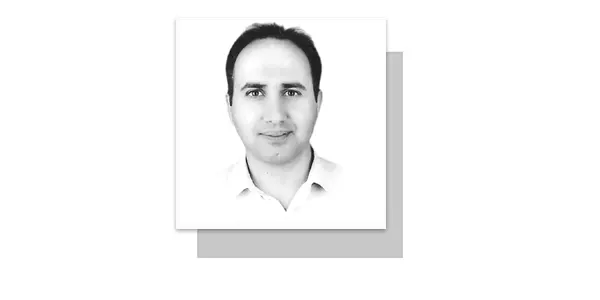THE global population is ageing rapidly, with a sizable share of the older population residing in developing countries. Pakistan is one of only 15 countries worldwide with about 8 percent of the population (16 million plus) being over 60 years old. The aging population in Pakistan, projected to be doubled to 40 million by 2050, underscores the need for post-retirement support due to its impact on health services and the prevalence of degenerative and communicable diseases. Infections are the leading cause of morbidity in old age, alongside visual impairment, walking difficulties, chewing difficulties, hearing issues, osteoporosis, arthritis and incontinence. Pakistan’s United Nations Human Development Index ranking is 150th out of 189, with only 2.3% of the population above the statutory pensionable age receiving an old-age pension. As life expectancy increases above 70, the aging population faces challenges, leading to less intergenerational support. Class plays a significant role in the health of the elderly in Pakistan, with women having no advantage over men.
Aging has vast implications for a country’s economic, social and political spheres. As life expectancy increases in Pakistan, all stakeholders, including the government, non-governmental organizations, private sector, media, academia and communities, need to proactively confront this change. Socio-economic policies and programs need to consider the multi-sectoral implications of an ageing population and social protection interventions and health systems need to adapt to respond to the economic and health rights of an older population. Pakistan is a signatory to the Madrid International Plan of Action on Ageing (MIPAA), which links population ageing and the wellbeing of older persons to international frameworks for social and economic development and human rights. The Sustainable Development Goals (SDGs) advocate for age-inclusive development and a study on the state of older women and men in Pakistan using a human rights lens has generated new insights into the lives of older people in Pakistan.
The elderly population in Pakistan constitutes 7.5% of the population, but their pension system is erratic, leading to discrimination and lower employment levels. The government has introduced several acts to protect the elderly from economic, social and political injustices, but these efforts have not improved their status in society. NGOs like Edhi Foundation, Old Homes, Old Age Happy Homes and the Senior Citizen Foundation are working for elderly welfare, but face limitations due to funding issues, bureaucratic processes and corrupt practices. The situation is exacerbated by factors such as family reliance, health issues, loneliness, lack of federal laws and collectivistic household structures. Force field analysis indicates mental health issues, economic welfare and income security as driving forces for senior citizen independence, while state fiscal deficits, government priorities, social reluctance and lack of legislation hinder progress.
The government in the past had drafted three national policies and legislative tools for the elderly, including the 1999 National Policy for the promotion of their health, the 2004 National Policy of Older People and the 2007 Senior Citizens Bill, none of these were presented to Parliament for consent. However, the Ministry of Health launched the National Programme for Health Care for the aged in 2010 to increase preventative, curative and rehabilitative treatments but never implemented in spirit. The provinces too have made little progress on the Senior Citizen Bills.
The majority of older persons, particularly women, face limited access to basic needs such as food, water and shelter clothing. Age-related discrimination in accessing work and employment hinders income generation, with only a few older people having access to government allowances and only 2% receiving a pension. Public participation is limited, with older women, especially in rural areas, having limited access to public life except for religious activities and family ceremonies. Health care access is limited, with only half of the older population satisfied with their daily living care. Barriers include lack of transport, low availability, low quality of services, lack of medications, bureaucracy and age-friendly services. Self-fulfilment is generally satisfied with freedom, but two-thirds report insufficient education, older people in urban areas lack fair share of wealth and 15% experience emotional distress. Older people face significant financial burdens in accessing healthcare services, with 25% struggling, with women performing worse than men and 50% believing younger family members have greater healthcare cost-paying abilities.
The government should provide elderly citizens with safe, secure homes, including food, shelter, water and toilets. Regular inspections of these homes, including hygiene checks, can help ensure their well-being. Regular visits by psychiatrists and doctors can also confirm the residents’ mental and physical well-being. Awareness campaigns and campaigns to remove prejudices against the elderly in the employment process can help them feel financially secure. A comprehensive database of old people living in unsatisfied conditions can help identify areas needing immediate attention. A pension system should be made more convenient for old employees and a compensatory system should be implemented for those earning a certain amount. Random checks of elderly spending can measure their equity and welfare. Old age homes should be built according to population proportion, with a separate room for communication and community service. University graduates should fulfil community service hours to ensure their happiness.
Its height time that the government must address population ageing efficiently and proactively by designing innovative policies to cater to the needs of older persons, including housing, employment, healthcare and social protection. This includes implementing existing policies, improving coordination between local administration and non-governmental bodies, expanding pension coverage, improving employment and education opportunities, improving healthcare access, distinguishing between social services and public sector responsibilities, providing support for older people and encouraging intergenerational solidarity.
—The writer is PhD in Political Science and visiting faculty member at QAU Islamabad.
Email: [email protected]
views expressed are writer’s own.










